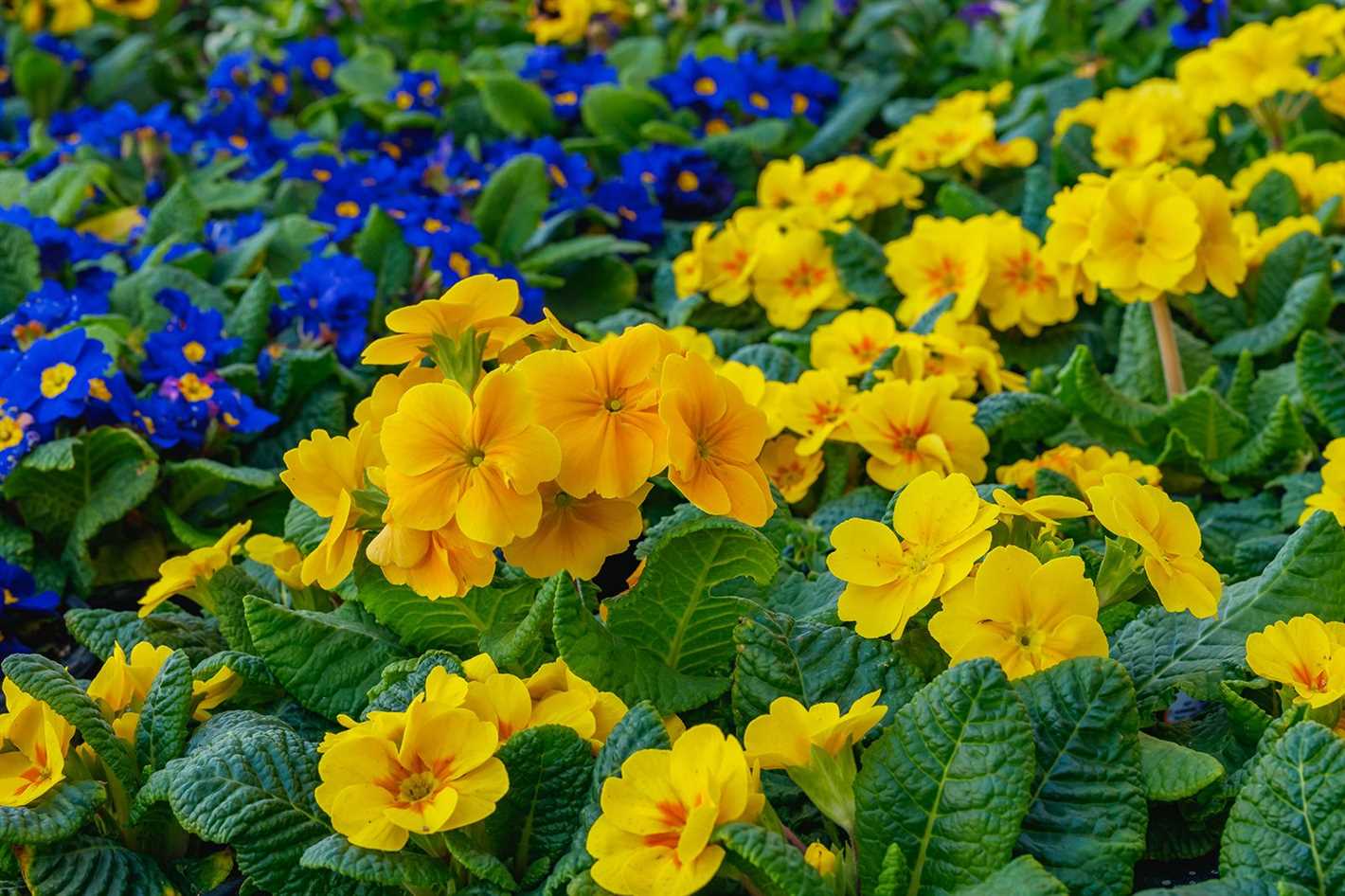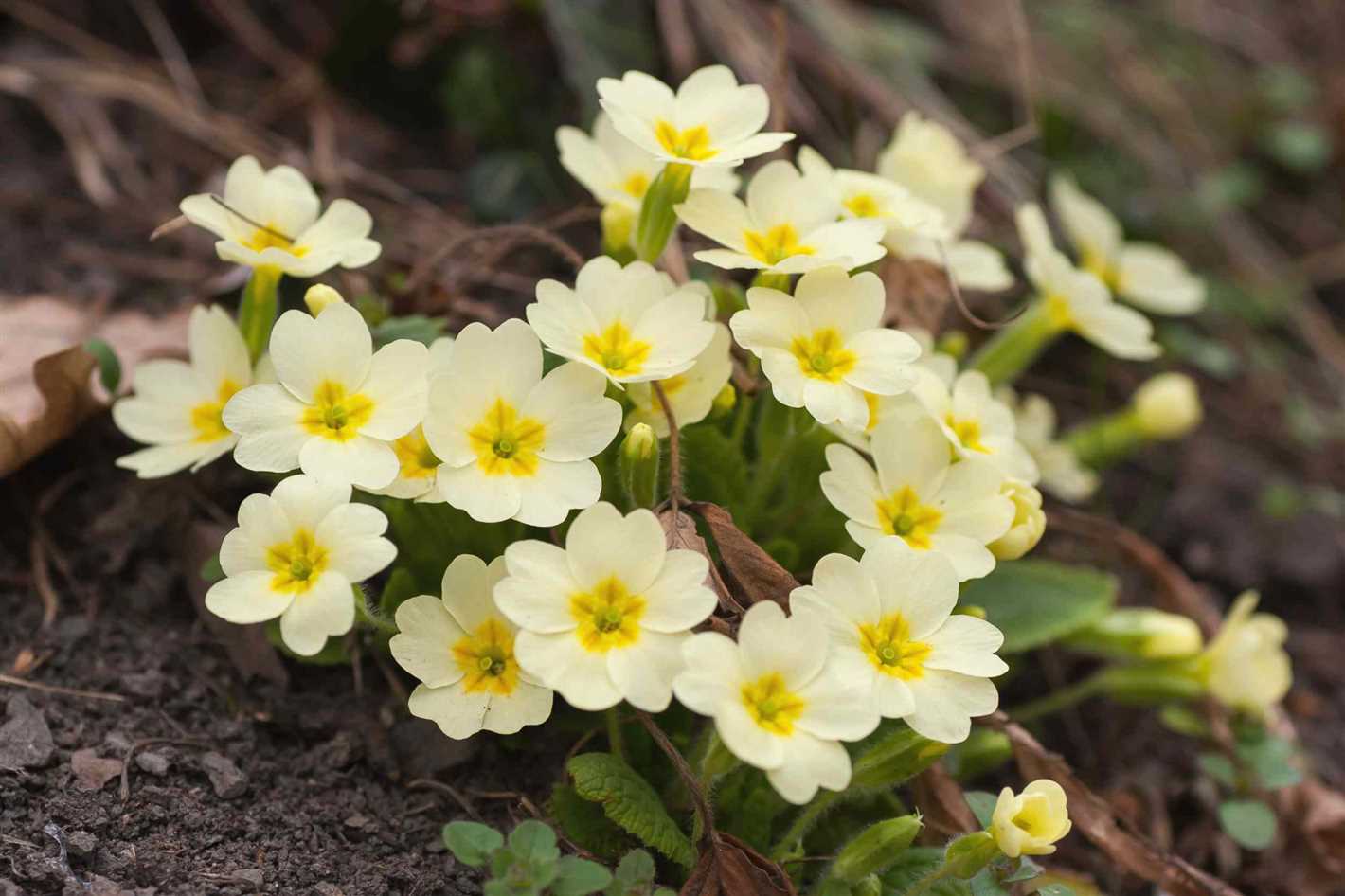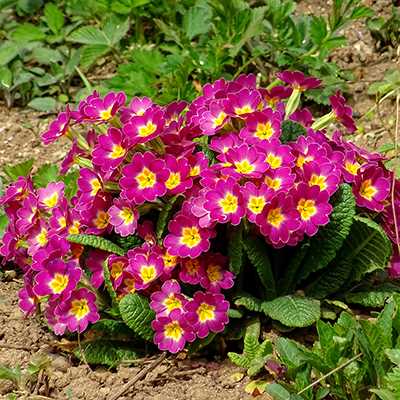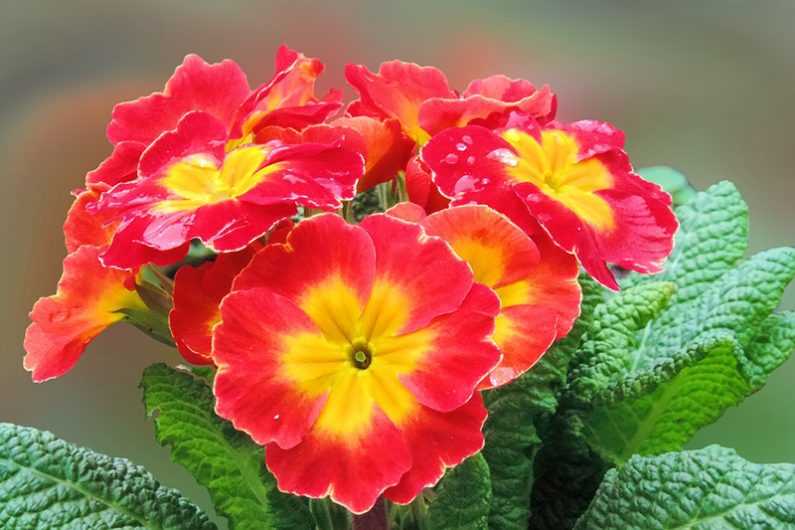- What is Primrose?
- Benefits of growing Primrose in your garden
- Choosing the right Primrose variety
- Introduction
- Factors to consider
- Popular primrose varieties
- Conclusion
- Tips for planting Primrose
- 1. Choose a suitable location
- 2. Prepare the soil
- 3. Plant at the right time
- 4. Space the plants properly
- 5. Water regularly
- 6. Mulch for protection
- 7. Fertilize occasionally
- 8. Deadhead spent blooms
- Proper care and maintenance of Primrose
- Common problems and solutions for growing Primrose
- Poor blooming
- Pest infestation
- Yellowing leaves
- Deformed flowers
- Wilting
- Harvesting and using Primrose
- When to harvest
- How to harvest
- Using Primrose
- Preserving Primrose
- Questions and Answers:
- What are the different types of primrose?
- How should I plant primrose in my garden?
- What colors do primroses come in?
- How do I care for primrose plants?
- Are primroses easy to grow?
- Videos: Primrose Plant Care | Plant Chat Friday – SGD 311
Primroses are delicate and charming flowers that are popular for their vibrant colors and early spring blooms. They are a versatile plant that can thrive in various garden environments, making them a favorite among gardeners. In this ultimate guide, we will explore everything you need to know about growing primroses in your garden, including different types and varieties.
Primroses, scientifically known as Primula, belong to the family Primulaceae and are native to Europe, Asia, and North America. They are known for their low-growing habit and highly ornamental flowers. The flowers can vary in color, ranging from white and yellow to pink, purple, and even red, and they are often fragrant, adding an extra element of appeal to your garden.
There are several different types and varieties of primroses, each with its own unique characteristics. The most common types include the English primrose (Primula vulgaris), which has pale yellow or white flowers and is often seen in cottage gardens, and the drumstick primrose (Primula denticulata), which has ball-shaped clusters of flowers in various colors.
Other varieties of primroses include the cowslip (Primula veris), with small, bell-shaped yellow flowers, and the super-hardy primrose (Primula japonica), which is ideal for colder climates and has vibrant pink, red, or purple flowers. With so many different types and varieties to choose from, there is a primrose to suit every garden style and preference.
“Primroses are not only beautiful, but they also offer many benefits to your garden. They are excellent pollinator attractors, attracting bees and butterflies, which helps to promote a healthy ecosystem. Additionally, primroses are relatively easy to care for, making them an ideal choice for beginners or busy gardeners.”
Whether you have a small patio garden, a sprawling landscape, or anything in between, primroses can be a wonderful addition. With this comprehensive guide, you will have all the information you need to successfully grow and enjoy these delightful flowers in your own garden.
What is Primrose?

Primrose is a popular flowering plant known for its vibrant and colorful blooms. It belongs to the Primulaceae family and is native to Europe, Asia, and North America. Primrose is highly valued for its early blooming period, often appearing in late winter or early spring, which adds a burst of color to the garden after the long winter months.
There are many different types and varieties of primrose, each with its own unique characteristics and growing requirements. Some of the most common types include:
- English Primrose: This is the most well-known type of primrose, with flowers that come in various shades of yellow, white, and pink. English primrose is a compact plant that grows well in containers or as a border plant.
- Evening Primrose: Unlike other primrose varieties, evening primrose is best known for its beautiful yellow flowers that bloom in the evening. It is a perennial plant that can grow quite tall, reaching up to 5 feet in height.
- Fairy Primrose: Fairy primrose is a smaller variety of primrose, growing only a few inches tall. It produces delicate flowers in shades of pink, purple, or white and is often used as a ground cover or in rock gardens.
- Candelabra Primrose: Candelabra primrose is characterized by its tall stems that hold clusters of flowers. The flowers are arranged in the shape of a candelabra, hence the name. This variety comes in a range of colors, including yellow, orange, pink, and red.
Primrose plants are relatively easy to grow and care for. They prefer partial shade or filtered sunlight, as direct sunlight can scorch their delicate blooms. Primrose also enjoys well-draining soil that is kept consistently moist. Regular watering and fertilizer application can help promote healthy growth and abundant flowering.
| Botanical Name | Primula |
|---|---|
| Family | Primulaceae |
| Origin | Europe, Asia, North America |
| Blooming Period | Late winter to early spring |
| Growing Conditions | Partial shade, well-draining soil, consistent moisture |
With their vibrant colors and early blooming period, primroses are a fantastic addition to any garden. Whether you choose to grow them in containers, as ground cover, or in flower beds, their beauty will surely brighten up your outdoor space.
Benefits of growing Primrose in your garden
Beautiful and colorful blooms: Primroses are known for their vibrant and eye-catching flowers. They come in a wide range of colors, including pink, purple, yellow, and white, adding beauty and elegance to any garden.
Early spring blooming: Primroses are one of the earliest blooming flowers, often appearing in late winter or early spring. Their cheerful blooms can be a welcome sight after a long, gray winter, bringing a burst of color to your garden when most other plants are still dormant.
Low maintenance: Primroses are relatively easy to grow and require minimal care. They prefer moist, well-drained soil and partial shade, making them suitable for a variety of garden conditions. They are also generally pest and disease resistant, meaning less effort and time spent on maintenance.
Long blooming period: Primroses have a long blooming period, often lasting several weeks. This means you can enjoy their beautiful flowers for an extended period of time, making them a great addition to any garden.
Attracts pollinators: Primroses are a magnet for pollinators such as bees and butterflies. By planting primroses in your garden, you can help support the local pollinator population and contribute to the overall biodiversity of your outdoor space.
Varied types and varieties: Primroses come in a wide range of types and varieties, offering plenty of choices for gardeners. From the classic English primrose (Primula vulgaris) to the robust and vibrant Primula vialii, there is a primrose variety to suit every taste and garden style.
Edible and medicinal uses: Some primrose varieties, such as the Primula veris (cowslip), have edible flowers and leaves that can be used in salads or to garnish desserts. Additionally, primroses have a long history of being used in traditional medicine for their potential therapeutic properties.
Choosing the right Primrose variety
Introduction
Primroses are beautiful and versatile flowers that can add a splash of color to any garden. With so many different varieties to choose from, finding the right one for your garden can be a daunting task. In this guide, we will explore some of the most popular primrose varieties and provide tips on how to select the one that suits your needs best.
Factors to consider
When choosing a primrose variety, there are several factors to consider:
- Hardiness: Primroses come in both hardy and tender varieties. Determine the climate in your area and choose a variety that is suitable for your region.
- Growth habit: Primroses can have different growth habits, from compact and mounded to tall and spiky. Consider the space you have available in your garden and choose a variety that fits your desired aesthetic.
- Flower color: Primroses are known for their vibrant and diverse colors. Decide on the color palette you want to achieve in your garden and select a variety that matches your vision.
- Blooming season: Primroses can bloom at different times of the year. Some varieties bloom in spring, while others flower in late summer. Choose a variety that aligns with your desired blooming season.
- Scent: Some primrose varieties have a delightful fragrance. Consider whether you want your primroses to contribute to the overall scent of your garden.
Popular primrose varieties
Here are some of the most popular primrose varieties:
| Variety | Hardiness | Growth Habit | Flower Color | Blooming Season | Scented |
|---|---|---|---|---|---|
| P. vulgaris | Hardy | Compact | Various | Spring | No |
| P. denticulata | Hardy | Tall and spiky | Purple, white, pink | Spring | No |
| P. x polyantha | Hardy | Compact | Various | Spring | No |
| P. florindae | Tender | Tall and spiky | Yellow | Late summer | No |
| P. elatior | Hardy | Compact | Various | Spring | Yes |
These are just a few examples of the many primrose varieties available. Explore local nurseries and gardening centers to discover even more options.
Conclusion
Choosing the right primrose variety for your garden is an exciting process. Consider factors such as hardiness, growth habit, flower color, blooming season, and scent to make an informed decision. Whether you opt for a compact variety for containers or a tall and spiky one for borders, primroses are sure to bring joy and beauty to your outdoor space.
Tips for planting Primrose
Planting primrose can be a rewarding and enjoyable experience. Whether you are a beginner or an experienced gardener, here are some tips to help you successfully grow primrose in your garden:
1. Choose a suitable location
Primroses prefer partial shade or filtered sunlight, so choose a location in your garden that provides these conditions. Avoid planting in areas with full sun, as this may cause the plant to wilt or burn.
2. Prepare the soil
Before planting primroses, prepare the soil by removing any weeds and loosening it with a garden fork or tiller. Primroses prefer well-drained and slightly acidic soil. You can amend the soil with organic matter, such as compost, to improve its fertility and drainage.
3. Plant at the right time
Primroses are typically planted in the early spring or fall. Planting in cooler temperatures allows the roots to establish before the hot summer months. Make sure to water the plants well after planting to help them settle in.
4. Space the plants properly
When planting multiple primroses, space them about 6-12 inches apart to allow for proper air circulation and growth. This will help prevent diseases and ensure that each plant has enough space to thrive.
5. Water regularly

Keep the soil consistently moist but avoid overwatering, as this can lead to root rot. Water primroses at the base of the plant to avoid wetting the leaves, which can cause fungal diseases. Check the soil regularly and adjust the watering schedule accordingly.
6. Mulch for protection

Apply a layer of organic mulch around the base of the plants to help conserve moisture, suppress weeds, and regulate soil temperature. Avoid placing mulch directly against the stems to prevent rotting.
7. Fertilize occasionally
Primroses do not require heavy feeding, but you can apply a balanced, slow-release fertilizer in early spring to promote healthy growth. Follow the instructions on the fertilizer packaging for proper application.
8. Deadhead spent blooms
To encourage continuous blooming, remove faded flowers by pinching or cutting off the spent blooms. This will redirect the plant’s energy towards producing new flowers.
By following these tips, you can successfully plant and grow beautiful primroses in your garden. Enjoy their vibrant colors and delicate blooms throughout the season!
Proper care and maintenance of Primrose
Watering:
Primroses prefer consistently moist soil, so it is important to water them regularly. However, be careful not to overwater, as this can lead to root rot. Water the plants at the base, avoiding watering the leaves to prevent fungal diseases.
Light:
Primroses thrive in partial shade to full shade. They can tolerate some morning sunlight but should be protected from hot afternoon sun, as this can scorch the leaves. If grown indoors, place them near a window with indirect sunlight.
Soil:
Primroses prefer a well-draining soil that is rich in organic matter. Adding compost or peat moss to the soil can help improve drainage and provide additional nutrients for the plants.
Fertilizing:
Use a balanced, water-soluble fertilizer once a month during the growing season to promote healthy growth and abundant blooms. Follow the manufacturer’s instructions for application rates.
Deadheading:
Remove spent flowers regularly to encourage continuous blooming. This will also prevent the plants from putting energy into producing seeds, allowing them to focus on producing new flowers.
Dividing:
Primroses can become crowded over time and may benefit from division. Divide the plants every 2-3 years in early spring or after they finish blooming. Gently lift the clumps from the ground and separate them into smaller sections, ensuring each section has roots and foliage. Replant the divisions in well-prepared soil.
Pest and disease control:
Watch out for pests such as aphids, slugs, and snails, which can damage the leaves and flowers. Use organic insecticides or pick off the pests by hand. Additionally, primroses are susceptible to fungal diseases such as powdery mildew and root rot. Provide good air circulation around the plants and avoid overhead watering to prevent fungal problems.
Winter care:
Most primrose varieties are cold hardy and can withstand freezing temperatures. However, in areas with harsh winters, provide a layer of mulch or straw around the base of the plants to protect them from frost. Cut back any dead foliage in the early spring to allow new growth to emerge.
Conclusion:
With proper care and maintenance, primroses can thrive in a garden or container, adding vibrant colors and delicate blooms. By following these guidelines, you can enjoy the beauty of primroses year after year.
Common problems and solutions for growing Primrose
Poor blooming
If your primrose is not blooming well, there can be a few possible reasons and solutions:
- Insufficient sunlight: Primroses need at least 4-6 hours of direct sunlight per day. Make sure they are placed in a sunny location.
- Overcrowding: If your primroses are planted too closely together, they may not have enough space to grow and bloom properly. Try thinning them out or transplanting them to give them more room.
- Lack of nutrients: Primroses require regular fertilization to maintain healthy growth and blooming. Use a balanced, slow-release fertilizer specifically designed for flowering plants.
Pest infestation
Primroses can be vulnerable to various pests, including aphids, slugs, and snails. If you notice pest infestation, try the following solutions:
- Aphids: Spray a solution of water and mild soap onto the affected plants or introduce natural predators such as ladybugs to control aphids.
- Slugs and snails: Set up traps with beer or use organic slug repellents to deter these pests.
Yellowing leaves
If the leaves of your primroses are turning yellow, it could indicate a problem:
- Overwatering: Primroses prefer moist but well-draining soil. Avoid overwatering and make sure the soil does not become waterlogged.
- Root rot: Excess moisture can lead to root rot, which causes yellowing leaves. Improve drainage and avoid overwatering to prevent root rot.
Deformed flowers
Deformed or distorted primrose flowers can be a sign of the following issues:
- Virus or disease: Some viral infections or diseases can cause flower deformities. Remove and dispose of infected plants to prevent the spread of the virus.
- Temperature stress: Extreme temperatures, especially frost, can damage the flowers and cause deformities. Protect your primroses from extreme temperature fluctuations.
Wilting
If your primroses are wilting, consider these possible causes and solutions:
- Underwatering: Primroses need regular watering, especially in dry or hot weather. Ensure they receive adequate moisture.
- Root damage: Check the roots for any signs of damage or root-bound plants. If necessary, repot your primroses with fresh soil.
Harvesting and using Primrose
Primrose is not only a beautiful flower to have in your garden, but it can also be harvested and used in various ways. Here are some tips on how to harvest and use Primrose:
When to harvest
Primrose flowers can be harvested when they are fully bloomed. Look for flowers that are vibrant in color and fully open. It’s best to harvest them in the morning when the weather is cool and the flowers are at their freshest.
How to harvest
To harvest Primrose flowers, gently pinch the stem just above the base of the flower. Use a pair of garden shears or sharp scissors to make a clean cut. Avoid pulling or ripping the flowers, as this can damage the plant.
Using Primrose
- Decorative purposes: Primrose flowers can be used to add a pop of color to floral arrangements, bouquets, or as a centerpiece on tables.
- Culinary uses: Primrose flowers are edible and can be used to garnish salads or desserts. They have a mild, slightly sweet flavor that adds an elegant touch to dishes.
- Medicinal properties: Primrose flowers and leaves have been used in traditional medicine for their anti-inflammatory and diuretic properties. They can be used to make herbal teas or infused oils.
- Home remedies: Primrose oil is known for its skin-nourishing and moisturizing properties. It can be used to soothe dry or irritated skin, and is often found in skincare products.
Preserving Primrose

To preserve Primrose flowers, you can dry them by hanging them upside down in a cool, dark place with good air circulation. Once dried, store them in an airtight container away from moisture and direct sunlight.
Questions and Answers:
What are the different types of primrose?
There are several different types of primrose, including the common primrose (Primula vulgaris), the English primrose (Primula vulgaris), the drumstick primrose (Primula denticulate), and the cowslip primrose (Primula veris).
How should I plant primrose in my garden?
To plant primrose in your garden, choose a location that receives partial shade or dappled sunlight. Dig a hole that is slightly larger than the rootball of the plant and place the primrose in the hole. Backfill the hole with soil and water thoroughly. Be sure to space the plants according to their specific variety guidelines.
What colors do primroses come in?
Primroses come in a wide range of colors, including pink, purple, blue, white, and yellow. Some varieties even have bi-colored flowers.
How do I care for primrose plants?
To care for primrose plants, water them regularly to keep the soil moist but not waterlogged. Remove any dead or damaged leaves and flowers. Fertilize the plants with a balanced, water-soluble fertilizer every few weeks during the growing season. Provide some shade during the hottest part of the day and protect the plants from frost in colder climates.
Are primroses easy to grow?
Yes, primroses are generally considered easy to grow. They prefer moist, well-draining soil and can tolerate partial shade. With proper care and attention, they can thrive in the garden and provide beautiful blooms.







